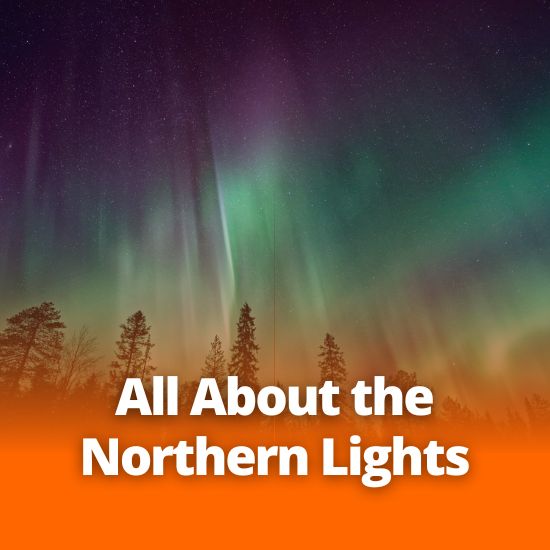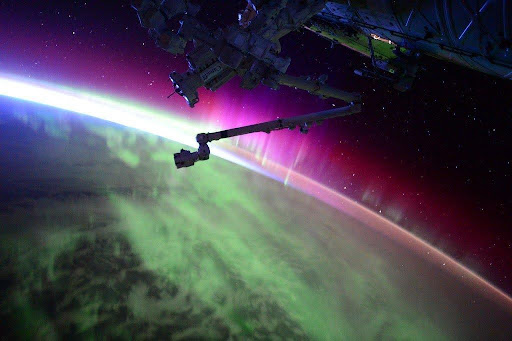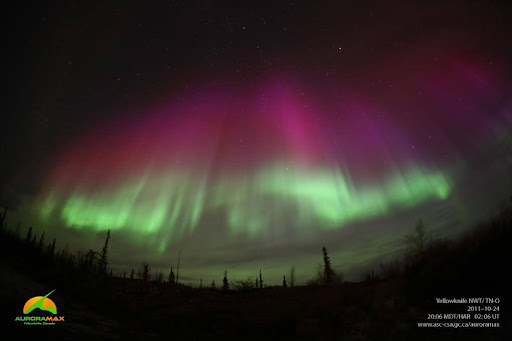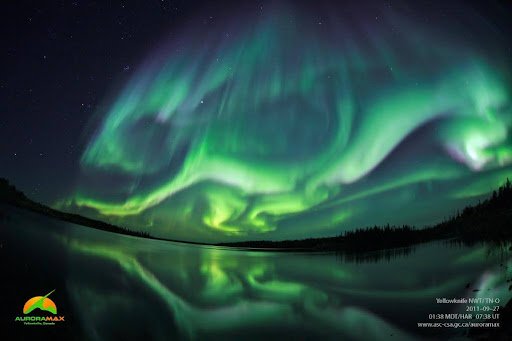
All About the Northern Lights
What are the Northern Lights?
Let’s start simply: The Northern Lights, or aurora borealis, is a natural phenomenon caused when electrons and protons (charged particles) collide with gasses in the Earth’s upper atmosphere. This meeting produces tiny flashes of colorful light. The movement of the lights, or ‘dancing’ is a result of these flashes occurring in a sequence. This is because Earth’s magnetic field steers the particles towards the north and south poles (take that flat earthers), the shape of Earth’s magnetic field (think a bar magnet) creates two ovals above the poles, which is why the lights occur almost every night in the northern sky from August to May.

(From the Canadian Space Agency, an image taken by NASA astronaut Scott Kelly aboard the ISS – featuring the Canadarm2)
The lights have Galileo Galilei to thank for their name. The famous Italian astronomer (also known for the discovery of Saturn’s rings and moons of Jupiter) took from the Greek god of the north wind ‘Boreas’ and Roman goddess ‘Aurora’ of the dawn, but the first record we have found of them actually comes from a cave painting dated back to 30,000 BC in France. And while these lights are often linked to locations further North, a written record of them has been found in the Bamboo Annals, a text from ancient China dated back to somewhere in 977 and 957 BC.
Closer to home, the aurora is integrated into legends, folklore, and traditional teachings in Indigenous Nations in Canada. In a 2021 CTV interview Joely Bigeagle-Kequahtooway, a Nakoda Cree Saulteaux woman said “Those are our ancestors in the sky and what that means literally and figuratively is we’re not alone on this planet…The stories I was told were those Northern Lights represent this…timeless energy period of when our ancestors lived on this land.”
Timing
Now if you stare at the sky and see some clouds, you’ll probably be able to guess fairly accurately if you’re going to get a douse of rain. The same cannot be said for the Northern Lights. Catching them is a 50/50 shot even under the perfect conditions with the right concentration of energetic electrons above, the clouds could still roll in to ruin your day. But, there are a few factors that you can watch for to get your best shot.
- They appear most commonly a few hours after sunset in clear skies, becoming more intense around midnight.
Location
- Away from light pollution, far from big cities
- Dark Sky Preserves like Jasper are great
- Closer to the North Pole, the better your chances to see the lights
- They can also be seen further south in Canada during periods of intense solar activity
Conditions
Let the experts tell you when you’ve got your best chance at seeing the Northern Lights.
- Astronomy North has an aurora forecast available for you to watch for the best opportunity to see the aurora in your area
- Check the National Map to see the auroral zone
- Space Weather Canada forecasts geomagnetic activity responsible for the lights
- The Long Term Forecasts will show you auroral zone activity
- The University of Alberta has Aurora Watch which displays real-time updates on geomagnetic activity in the Edmonton area. They even offer email alerts to let you know if the lights may be visible that night.
- It’s not the most well-designed website (the joys of unpaid student labor) but it’s up-to-date and local.
- Watch your local weather for changes that could make viewing difficult like clouds, rain, or a full moon.

Viewing Tips
For your best chance to see the aurora head NORTH! While there is a slight (slight, teeny-tiny, itty-bitty) chance of seeing the lights further south, North is your best bet.
They can be visible all year, but most easily during the fall/winter months, September to May. Geomagnetic activity is highest during autumn and spring equinoxes, so September, October, and March are the top months.
- Look up! Auroras can appear anywhere in the sky just just northward, so look around.
Oh the Places You’ll Go
Fort McMurray
The aurora borealis is said to be seen here 300 nights of the year in the right conditions. And there are a couple of popular viewing spots:
- Raphael Cree Boat Launch
- Parsons Creek Park
- OHV Staging Area (Tower Road)
With tours also offered locally:
- Birch Mountain Outfitters: an Indigenous-led tour that runs twice per week for three nights. You’ll get set up to camp in a heated cabin or teepee, and by day can enjoy dog-sledding and ice-fishing.
- Beyond Adventures: Base in an outfitter’s tent until the wee hours to enjoy peace and quiet among the stars. You’ll be provided with snowshoes, tea, coffee, and snacks.
Jasper National Park
A mountainous option for those of us in the Edmonton area, Jasper is amazing for outdoor experiences whether you’re going for the lights or not. Check out our Flash Intro here
County of Northern Lights
With a name like that, this northern county starts north of Peace River and crosses the same latitude as Fort Mac, just to the west. Not as easy to get to, but provides a unique experience.
Elk Island National Park – Beaver Hills
The next national park to add to your nighttime viewing list, this dark sky preserve includes the Cooking Lake Blackfoot Provincial Recreation Area as well, and happens to be where the Royal Astronomical Society of Edmonton meets from time to time.

Elk Island National Park – Beaver Hills
The next national park to add to your nighttime viewing list, this dark sky preserve includes the Cooking Lake Blackfoot Provincial Recreation Area as well, and happens to be where the Royal Astronomical Society of Edmonton meets from time to time.
Wood Buffalo National Park
A stone’s throw from Santa’s front door, this is a huge area north of Fort Mac. And while it’s not super easy to get to, seeing the lights should be easy under the right weather conditions.
Cypress Hills Interprovincial Park
This area of southeastern Alberta overlaps with Saskatchewan, and therefore provides some decently open hills to view the lights.
Waterton Lakes National Park
Up against our southern border the chance to see the lights dims (ha) but it’s still a gorgeous stargazing spot, with interpretive stargazing tours offered.
Lakeland Provincial Park
North of Edmonton and east of Lac La Biche, this park holds a Dark Sky Celebration annually the third weekend of September.
Canadian Rockies
From Banff to Jasper, the Rocky Mountains in general are probably what you’ve seen online for those picture-perfect images of the dancing borealis. Stunning day and night, they’re a jewel in Alberta’s crown, whether the lights show up or not.
(Information from the Canadian Space Agency (CSA), NASA, AuroraMax (Yellowknife), and CTV Calgary)
